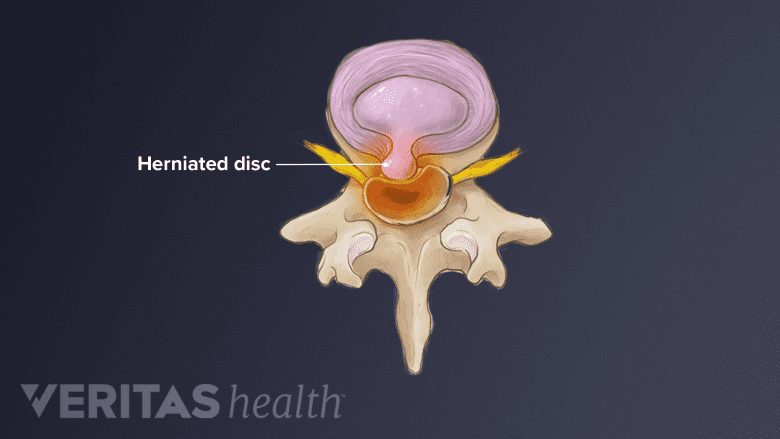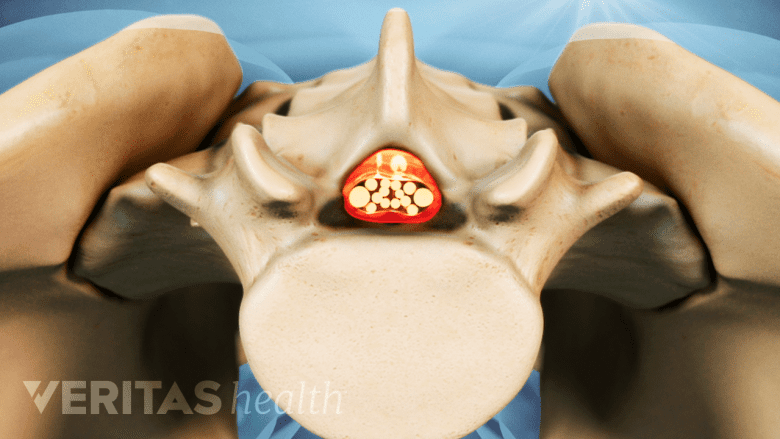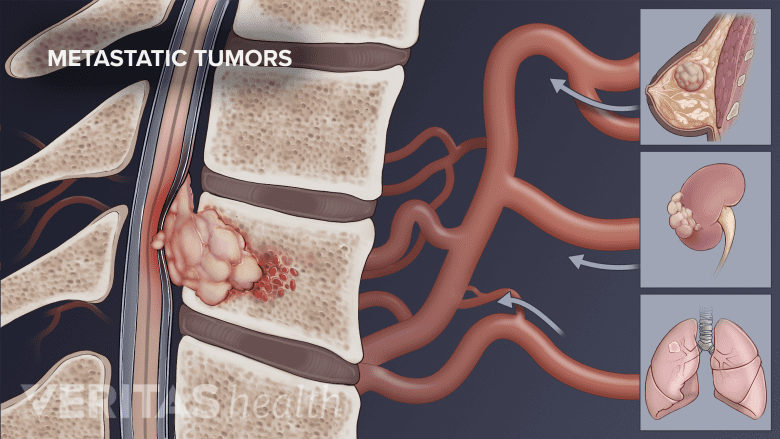Lower right back pain is commonly caused by damage or injury to the spinal structures, such as the lower right back muscles, the lumbar intervertebral discs, or the facet joints. While problems with these structures are more likely to cause centralized pain around the spine, it is possible that pain is felt primarily or entirely on one side of the spine.
In This Article:
- A Guide to Lower Right Back Pain
- Lower Right Back Pain: Tissues & Spinal Structures
- Lower Right Back Pain from Internal Organs
- Lower Back Pain Causes and Symptoms Video
Lower Right Back Muscle Strain
Muscle strain is the most common source of low back pain, and may cause pain that presents mainly on the lower right hand side of the back.
See Pulled Back Muscle and Lower Back Strain
Typical symptoms include:
- Limited range of motion (movements such as bending forward or turning to the side may be painful or impossible)
- Tenderness and/or swelling in the lower right back
- Lower back muscle spasms
- Pain that feels better with rest, such as sitting with both feet propped up and the knees supported and slightly bent—in an armchair with an ottoman, or in a recliner or propped up with pillows in bed
- Pain that feels better with ice or cold pack application
- Pain that resolves at least partly with over-the-counter NSAIDs, such as ibuprofen, and/or acetaminophen
- Pain that increases when getting up from bed or from a seated position
See Video: What Is Your Back Muscle Spasm Telling You?
Most muscle strain happens as a result of relatively minor injuries, such as twisting while lifting a bag of groceries. Muscle strain can also occur from an impact-type injury, such as a sports injury or car accident.
Most cases of muscle strain start to feel better within a few weeks and do not require medical attention from a doctor.
Lower Right Back Pain from the Spinal Column
Pain sources in the spinal column may include any combination of the interconnected structures, such as the small facet joints that run along the back of the spine, the discs in each motion segment, and or the nerve roots that branch out on the right hand side of the spine at each segment.
Common lower back conditions that may present symptoms on the right hand side include:
Lumbar Herniated Disc

A lumbar herniated disc may cause nerve root inflammation and low back pain.
A disc between two vertebrae may herniate on the right side of the spine, allowing the jelly-like inside to protrude or leak. A herniated disc may cause dull low back pain due to inflammation in the local area. Pain that radiates into the buttock and/or right leg is more common, but not always.
Facet Joint Pain (Osteoarthritis)
Stiffness, discomfort, and local tenderness in the lower right back are possible symptoms of arthritis affecting the facet joints in the spine. In some cases, a nerve on the right side of the spine is compressed by an arthritic bone spur on the facet joint, and may lead to lower right hand side back pain and local tenderness.
Spinal Stenosis

Narrowing of the spinal canal results in weakness in the buttocks and legs.
The spinal canal may narrow due to a herniated disc, bone spur, or other obstruction, causing lower right back pain and radicular pain and/or weakness in the right buttock and leg.
Sacroiliac Joint Dysfunction

Too much or too little movement in the sacroiliac joint is a cause of low back pain.
The sacroiliac joints connect the bones of the pelvis with the base of the spine. If the sacroiliac joint on the right side of the pelvis experiences too much or too little movement, pain may be felt in the lower right back and/or right hip.
See Sacroiliac Joint Dysfunction (SI Joint Pain)
Ankylosing Spondylitis
This inflammatory condition may originate in the lower sacroiliac joint, and early signs of ankylosing spondylitis may present as lower right back pain and/or right hip pain. Over a long period of time, ankylosing spondylitis may cause spinal joints and vertebrae to fuse together and limit motion in the spine.
See more about ankylosing spondylitis on Arthritis-health.com
Treatment for these spinal problems will vary based on the condition a patient has and the severity of their symptoms. There is a wide range of treatment options, such as hot/cold packs and over-the-counter pain medications, as well as manual manipulation, physical therapy, injections, or surgery. Patients may find that finding effective treatment is a process of trial and error, and the optimal combination of treatments may change over time.
Less Common Causes of Lower Right Back Pain
Problems in the spinal column or far-reaching pain conditions can also cause lower right back pain. Some such conditions include:
Degenerative spondylolisthesis

Degenerative spondylolisthesis may strain the lower back muscles and compress the nerve roots.
One bony vertebra that has slipped forward over the vertebra below it due to age-related wear and tear on the spine is referred to as degenerative spondylolisthesis. This condition can put strain on the lower back muscles supporting the spine, and may compress or irritate nerve roots and causing local lower right back pain and usually radicular pain that follows the path of the sciatic nerve into the right leg.
Chronic pain syndromes
Fibromyalgia and myofascial pain syndrome are chronic pain conditions that cause full-body musculoskeletal pain, and may cause pain concentrated on one side of the low back. Other symptoms include tenderness in particular areas, called trigger points, as well as persistent fatigue.
Read more about fibromyalgia on Arthritis-health.com
Spinal tumor

Metastatic tumors cause localized or radiating pain depending on the site of the tumor.
Cancer originating in the spine is not common, and most spinal tumors spread to the spine after starting in another part of the body. If a tumor presses on the right side of the spine, or presses on a nerve root on the right side, lower right back pain can result.
Some conditions may be more difficult to diagnose than others. If a person experiences long-lasting symptoms that come and go or progressively worsen, it can be helpful to keep a detailed record of when and how severely symptoms occur.

